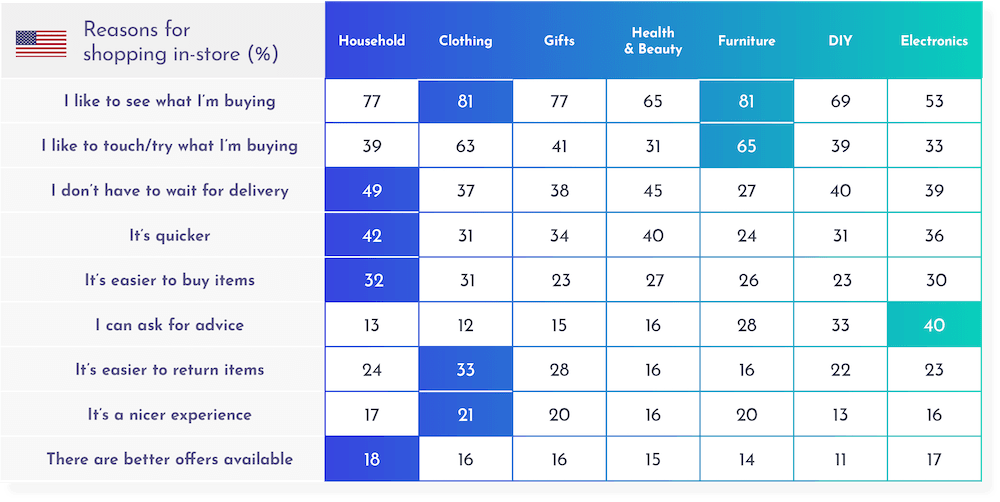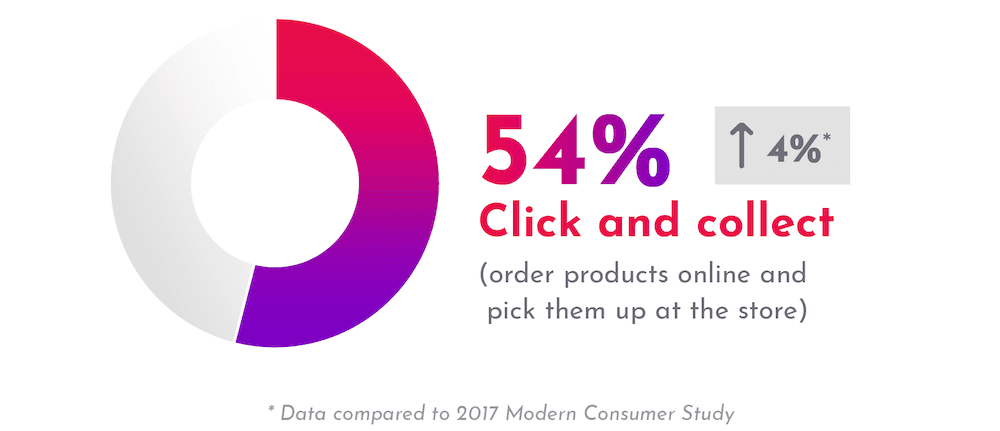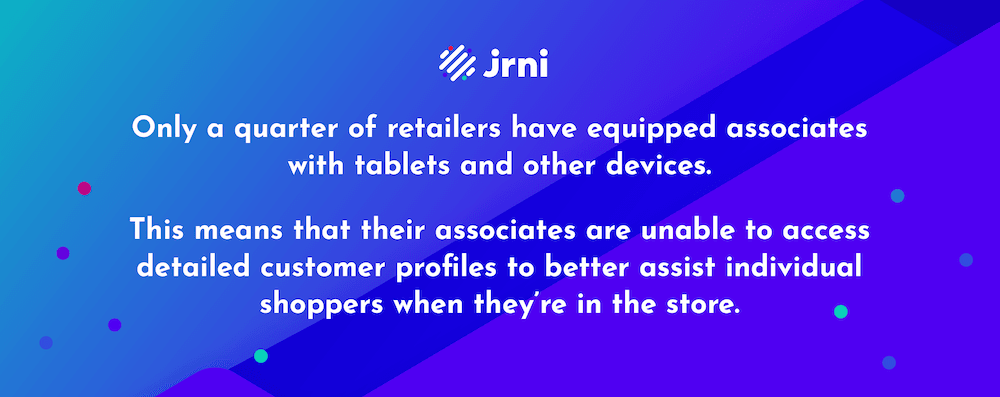Webrooming and showrooming are two terms that seem to draw an instinctive grimace on the faces of even successful retailers. The idea that customers could come into the store, check out what’s being offered, and then leave to find everything cheaper online is a frightening thought to businesses that have invested so much into their physical spaces.
There’s no doubt that online channels - mainly Amazon, Google, Instagram, and YouTube - have given consumers unprecedented power to research, compare, and purchase on their own terms. But rather than try to discourage this behavior, forward-thinking retailers are already thinking about how they can turn these dynamics to their advantages.
In this article, we’ll look into why the question of “webrooming vs. showrooming” should not be considered in such binary terms. We’ll also provide some actionable tips that retailers can use to make themselves more robust in the face of these trends.
Webrooming vs. showrooming
What is webrooming and showrooming? Before we can get into how retailers can make sense of these terms, we have to define them. Fortunately, these concepts are fairly easy to define and remember, as they’re essentially opposites.
Webrooming is when consumers do research online - compare prices, read/watch reviews, check social media and online communities, look at product specs, etc - and then, go to a store to do a final evaluation or consideration, and ultimately make a purchase.
Showrooming is when consumers go into a store to test, try on, or otherwise compare items before leaving the store and making a purchase online. This allows them to narrow down their choices and then leave to find the best price or promotion, even if it’s with a different retailer.
That these two phenomena became commonplace among consumers enough that they earned specific names can be traced to several converging trends:
- The ubiquity of smartphones. Now that every consumer has a browser and a slew of apps that help them compare prices, features, promotions, etc., it’s easier than ever for people to bypass an individual retailer’s information to shop on their own terms.
- The trust in online reviews. According to a 2018 study from Bizrate Insights, 90.8% of consumers use online reviews as part of their research process at least some of the time. Research from BrightLocal found that 94% of consumers age 18-34 use trust online reviews as much as personal recommendations. This applies to a wide range of industries - Yelp for restaurants, Amazon for most consumer goods, TripAdvisor for destinations, etc.
- The lower prices of online retailers. While many retailers are offering price matching for certain goods, online retailers - specifically Amazon - often had lower prices than their brick-and-mortar counterparts. Knowing that, people opted to forgo the immediacy of purchasing in-store to simply buy what they needed online at a discount.
Essentially, webrooming is the pendulum swinging back in the other direction. Consumers are gathering information online, reading reviews, comparing choices, and then heading into the store to make their final evaluation and purchase.
While most commentary on these retail trends initially explained them as being separate modes of consumer behavior, the truth is that webrooming and showrooming are two sides of the same coin.

Why do customers go in-store versus shop online?
The initial fear that many brick-and-mortar retailers had when customers started coming into their stores to see, touch, and test different items then retreating to their mobile devices to order the items online was somewhat misdirected. The problem wasn’t that e-commerce was dislodging physical stores from the retail environment - the problem was that most retailers were caught flat footed by changing consumer expectations.
The fact is that as omnichannel became table stakes for success in the retail industry, discouraging or preventing shoppers from seamlessly switching between digital and physical channels will simply push customers away. Customers use the channels they want to use based on where they are in their decision-making process. Thus, stores, mobile apps, review sites, and anything else today’s consumer relies on to make purchases must not be seen as siloed, standalone touchpoints, but as one interconnected experience.
Our recent research report found considerable evidence pointing to this shift in how consumers shop across industries and channels. In fact, we found that webrooming is far more common than showrooming. 74 percent of consumers in our study reported webrooming this year, while only 57% said they engaged in showrooming.
We found that stores tend to win consumers over in the following areas:
- 70 percent of consumers prefer stores to online channels when they want to make a purchase quickly, compared to 17% who felt online shopping was faster.
- 56 percent said they can get their specific questions answered faster in-store than trying to research online, as opposed to 24% who preferred online channels for asking questions.
- 46 percent said they choose the in-store experience when they need something explained to them, whereas only 30% said they choose online channels for this task.
Online channels, on the other hand, have their own distinct advantages in the customer journey.
- 65 percent of consumers favor online channels when looking for reviews and recommendations, while just 17 percent use stores to hear what others are saying about products and services.
- 55 percent of shoppers gravitate toward online channels when they want to compare the full range of products, and only 24% said they go in-store for this.
- 57 percent said they prefer online channels to find in-depth product information, while only 21% said they go in-store to gather the same information.
The drivers of in-store purchases is also different for each vertical.

In verticals such as clothing/apparel, furniture, and household items, we found that consumers care deeply about the ability to go in-store and see/try what they are buying before committing to a purchase. In the case of electronics, we’re seeing that asking for advice is something a significant subset of consumers want from a store.
Regardless of vertical, it’s clear that retailers need to continually incorporate the voice of the customer when constructing the omnichannel experience. Understanding the buyer personas that make up their customer base and being flexible enough to cater to both the webroomers and the showroomers is vital for success.
How top retailers make the best of webrooming and showrooming
The retailers best positioned to succeed in the retail industry are the ones who ensure they don’t need to worry so much about whether customers are webrooming or showrooming. Regardless of how customers prefer to shop, they should find it as seamless as possible to get what they ultimately want.
Buy online, pick up in-store, and vice versa
We’ve discussed the importance of “buy online, pick up in-store” before, but it’s worth repeating in the context of webrooming and showrooming. Our research showed that one of the best ways for retailers to fend off Amazon and other online retailers is to offer “click and collect” services as a key part of an omnichannel strategy.

While the vertical you’re in impacts how your customers will want to shop, it’s far more likely that your customers will be webrooming than the opposite. As RetailMeNot shows, most major retailers are offering buy online, pick up in-store, making it simple for customers to place an order online at their convenience and pick up their goods same-day or next-day. Retailers as diverse as Home Depot, Apple, Bloomingdale’s, and more are bridging their physical and digital channels in this way.
Encourage reviews
Online reviews play a major role in the buyer’s journey for consumer goods. Research published by Zendesk showed how online reviews can impact customer acquisition and lifetime value: 88% of consumers reported being influenced by an online customer service review during their decision-making process.
Zendesk’s research also showed that consumers are more likely to leave a negative review if they had a bad experience than they are to leave a positive one. This means you can’t leave your online reputation up to chance. Encourage your customers - especially your repeat ones - to leave an honest review for both your customer service and your products.
These reviews can have a major impact on customer acquisition, as they are a main driver of decision-making in a key stage of the buyer’s journey. They are also a critical part of understanding what customers love about you, and what they don’t care for.
Combine online and in-store experiences
Customers using their mobile devices in-store used to make most retailers cringe, but today, smart retailers are starting to wake up to the opportunities these devices bring.
In an interview with Gaurav Pant, research director for EKN Research, Retail Dive noted that any retail omnichannel strategy has to include mobile.
“The reason mobile can play a big role is because of the dexterity it affords retailers – it combines e-commerce, social media and native mobility such as location sensitivity, device features and app features into a powerful, portable customer channel,” Pant told Retail Dive. “We see retailers leveraging mobility to enable omnichannel integration across four key areas: customer engagement, commerce and payment, delivery/fulfillment and the in-store experience.”
Rather than seeing mobile experiences as mutually exclusive with stores, retailers have to find a way to incorporate them into the brick-and-mortar model. One leading example here is Hointer.
MyTotalRetail outlined some of the ways customers can use the Hointer mobile app seamlessly within the store to combine the best of online and in-store shopping. E-tags on each item can be scanned to show reviews, product videos, style ideas, and similar items, just as if they were shopping online. Omni-cart apps allow shoppers to simply scan the items they want to try on, and an associate will pre-prepare the fitting room with those items.

Despite some early innovations, mobile has not yet reached maturity in the retail space. As Retail Dive pointed out, only a quarter of retailers have equipped associates with tablets and other devices. This means that their associates are unable to access detailed customer profiles to better assist individual shoppers when they’re in the store.
With a more complete merger of mobile and brick-and-mortar, retailers won’t have to think about webrooming and showrooming. The very idea of both will be more or less irrelevant.
Make appointment scheduling easy
Personal shopping is making a comeback in a big way, particularly in the beauty, apparel, and home goods verticals. Many retailers in these spaces are offering appointment scheduling as a means of improving their omnichannel experiences.
This is how you turn webroomers into in-store shoppers. With an appointment scheduling application that is completely integrated with digital channels, shoppers can research and compare items, narrow down their choices, and make an appointment with a personal shopper to get more in-depth advice in a face-to-face format.
Appointments are a powerful way to provide a great customer service and increase basket size. One of our clients, a retailer with over 250 stores, found that customers who schedule appointments with a personal shopper spend 4x more than customers that didn’t. By increasing the number of personal shopping appointments you make, you can make noticeable improvements to your bottom line, as well as improve the customer experience through ease of use.
Webrooming and showrooming are not going away anytime soon. The goal for retailers is to find ways to make both concepts obsolete by better integrating digital and physical channels to better suit their customers preferences.
Want to learn more about the ROI of appointments? Then be sure to download our eBook to find out how appointment scheduling improves revenue and strengthens customer relationships.




